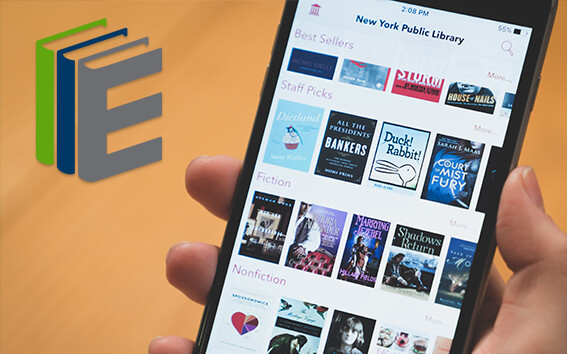Children and Parents
Ideas for Sensory Play at Home and Related Reading

As many of us with children in our lives know, sensory experiences are a foundation to early childhood development. If your local library was your favorite place to provide a child in your life with a safe, accessible, and fun way to learn, play, and strengthen their sensory development, you may be missing NYPL's in-branch library programming now more than ever. Thankfully, families can still enjoy fun sensory activities at home through reading, play, and a little help from basic household items! The Woodlawn Height's children's department has put together some ideas for you.
These activities are fun, easy to do, and can be adapted according to the materials you have at home:
Fun with Shaving Cream
- Using shaving cream, children can practice writing letters windows like finger painting.
- In a pan, children can also make different shapes with the shaving cream.
- This activity can help children practice lettering, build fine motor skills, and exposes them to new sensory experiences.
Bring Shapes to Life
- Using an ice tray and Jello mix, make blocks of Jello. Bonus points if you have fun ice tray molds that can be used to create interesting shapes and designs.
- Children can move the Jello around on a tray or cookie sheet, squish and squeeze them, or taste them. They can even use them as building blocks.
- This activity helps stimulate touch, smell, and sight as well as educate children on their basic shapes and colors.
Underwater Scene
- With adult supervision, children can go on a small scavenger hunt outside or indoors. Collect rocks, soil, sand, leaves, coins, or water-safe toys.
- In a plastic bin, your child can create an "underwater scene." Be creative!
- Once the scene is made, use a measuring cup to fill the bin with water to show your child what happens to the objects once submerged in water: do colors change? Do textures change? What floats and what sinks?
- Move the water to create waves and help the items inside swim around.
- This activity sparks imagination, stimulates sight and touch, and teaches children scientific concepts such as density.
Matching Game
- Print out images you find online or cut images out of old magazines (you will need two identical images).
- Paste the images onto construction paper and cut them out into cards.
- Arrange them in a random pattern in a face down position.
- Your child can then flip the cards over to try to find the matching images.
- Stimulates fine motor skills in the fingers along with memory.
I Spy
- This game can be played with two or more players.
- The first player declares, "I spy, with my little eye, something ________ [sticky, yellow, with wings, etc.].
- The other player(s) try to guess what it is.
- Each player takes turns being the spy and the guesser.
- Stimulates your child’s sight and memory.
The fun doesn't have to end when your activities and experiments are over. There are many books you can check out that can help you learn more about sensory development, sensory overload, and how to better meet the needs of children who struggle with sensory development and stimulation.

101 Games and Activities for Children with Autism, Asperger's, and Sensory Processing Disorders by Tara Delaney (also available as an e-book)

Uniquely Human: A Different Way of Seeing Autism by Barry M. Prizant (also available as an e-book, audiobook and in Chinese)

An Early Start for Your Child with Autism: Using Everyday Activities to Help Kids Connect, Communicate, and Learn by Sally J. Rogers

The Survival Guide for Kids with Autism Spectrum Disorders (and their Parents) by Elizabeth Verdick

Kids, Music ‘n’ Autism: Bringing Out the Music in Your Child by Dortia Berger
Read E-Books with SimplyE
 With your library card, it's easier than ever to choose from more than 300,000 e-books on SimplyE, The New York Public Library's free e-reader app. Gain access to digital resources for all ages, including e-books, audiobooks, databases, and more.
With your library card, it's easier than ever to choose from more than 300,000 e-books on SimplyE, The New York Public Library's free e-reader app. Gain access to digital resources for all ages, including e-books, audiobooks, databases, and more.
If you don’t have an NYPL library card, New York State residents can apply for a digital card online or through SimplyE (available on the App Store or Google Play).
Need more help? Read our guide to using SimplyE.
Comments
Thank you for sharing this
Submitted by Guest (not verified) on September 2, 2020 - 3:50pm